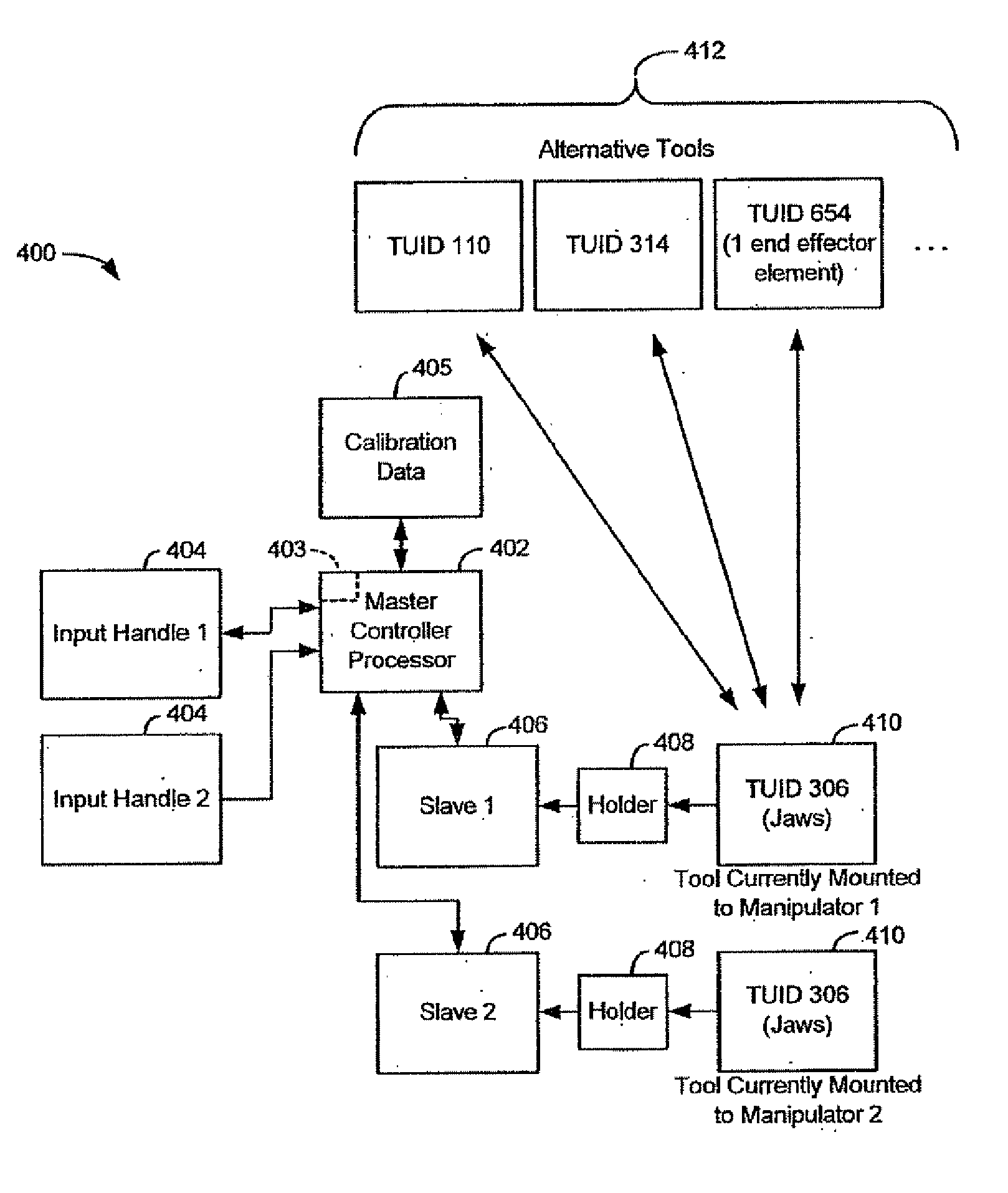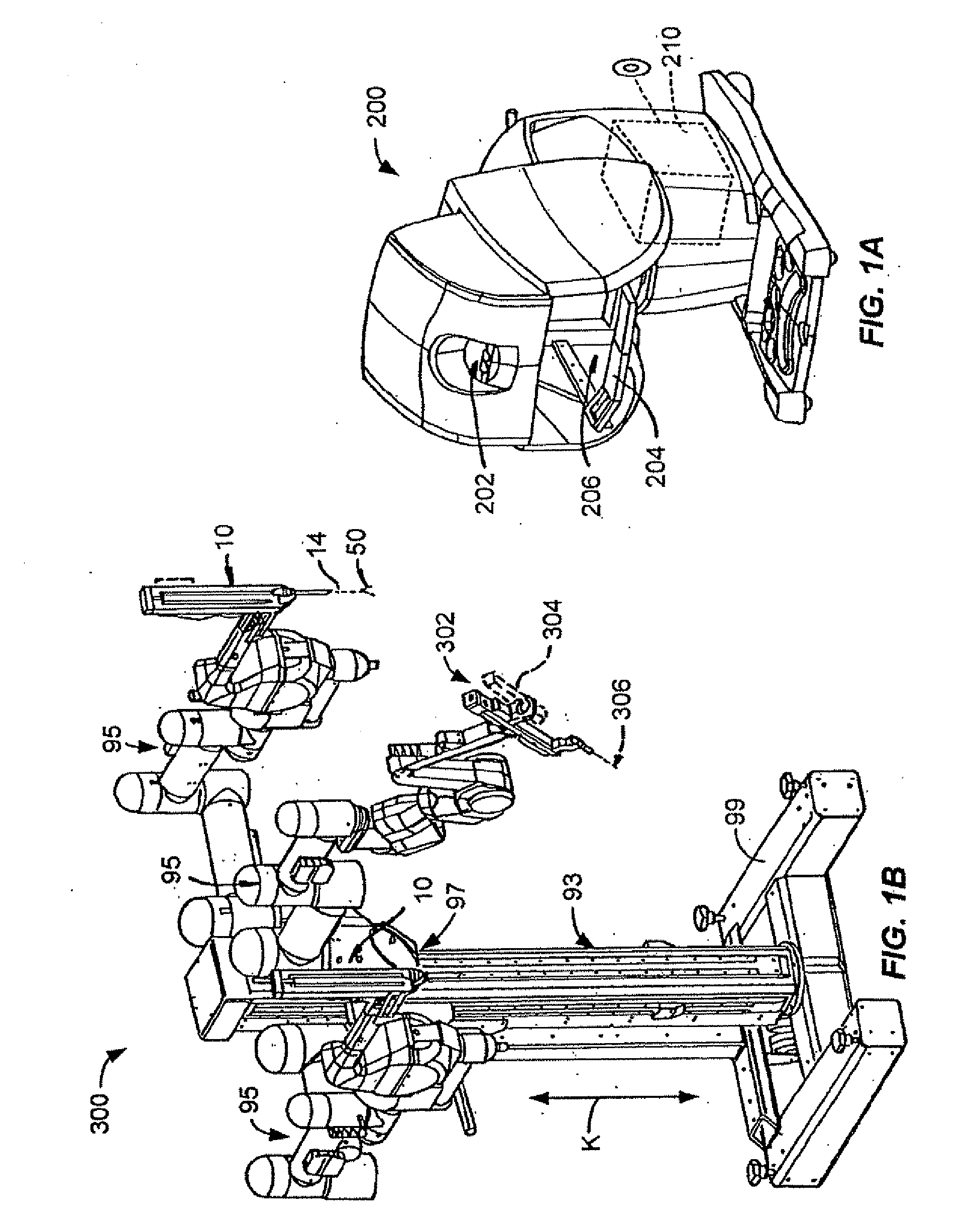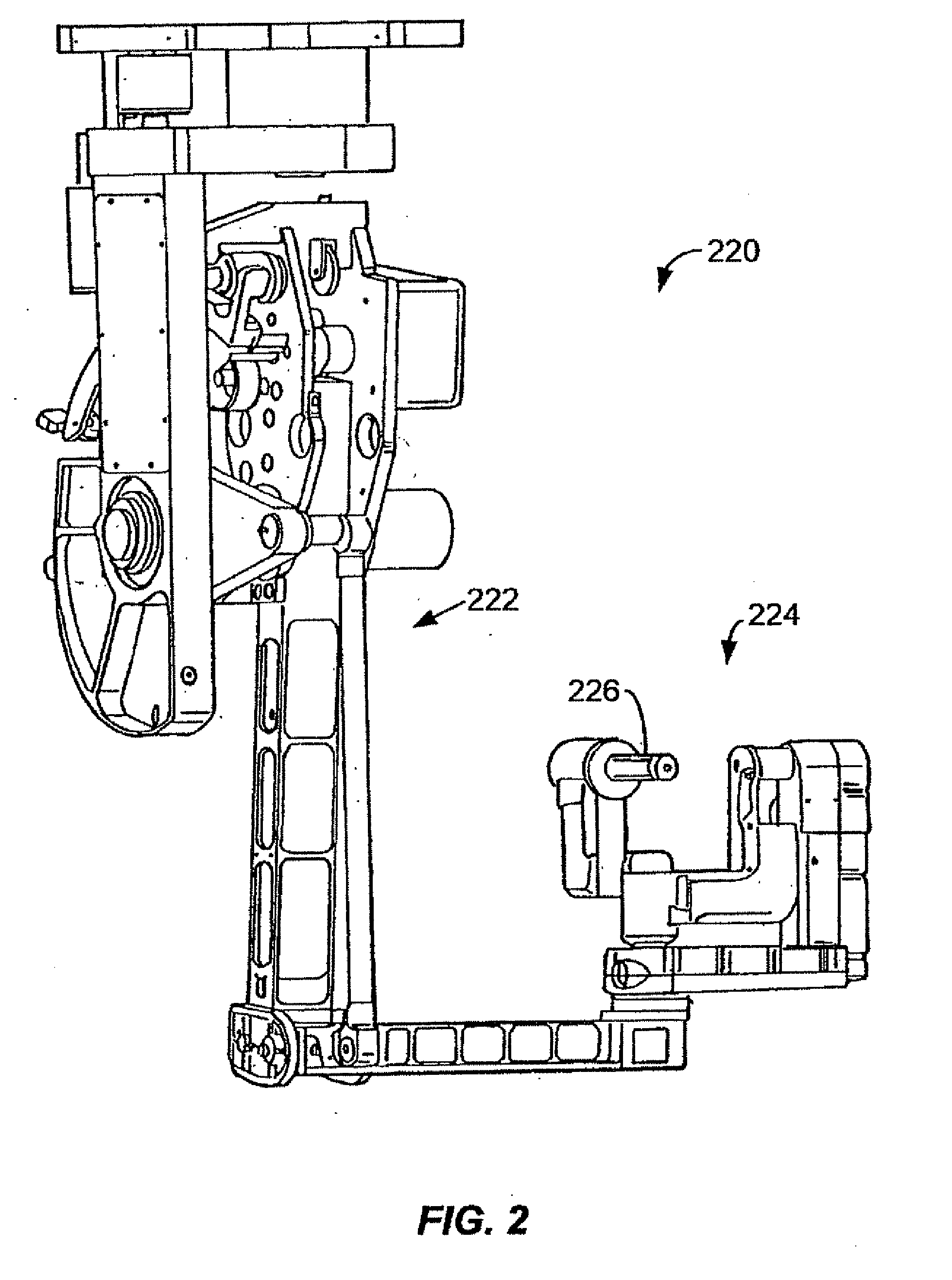Tool grip calibration for robotic surgery
a robotic surgery and tool grip technology, applied in the field of robotic surgery tool grip calibration, can solve the problems of processing device not affecting the calibration movement of any degree of freedom of the robotic arm, calibration movements of other degrees of freedom, undesirable delay in resuming surgery,
- Summary
- Abstract
- Description
- Claims
- Application Information
AI Technical Summary
Benefits of technology
Problems solved by technology
Method used
Image
Examples
Embodiment Construction
[0030] The present invention generally provides telerobotic, telesurgical, and surgical systems, devices, and methods. The invention is particularly advantageous for use with robotic surgical systems, in which a plurality of surgical instruments will be sequentially mounted on a manipulator during the surgical procedure. Loss of correlation between an input handle grip actuation and jaw articulation of telesurgical systems can be particularly problematic during telesurgery, and may be significantly more problematic than maintaining correlation between other input and output degrees of freedom in a surgical master / slave system. In some embodiments, by selectively calibrating end effector jaw movement (as opposed to calibrating all degrees of freedom of the slave), unnecessary surgical delays during tool swaps (in which one surgical instrument is removed from the manipulator and replaced with a different surgical instrument) can be avoided. In other embodiments, calibration of all axe...
PUM
 Login to View More
Login to View More Abstract
Description
Claims
Application Information
 Login to View More
Login to View More - R&D
- Intellectual Property
- Life Sciences
- Materials
- Tech Scout
- Unparalleled Data Quality
- Higher Quality Content
- 60% Fewer Hallucinations
Browse by: Latest US Patents, China's latest patents, Technical Efficacy Thesaurus, Application Domain, Technology Topic, Popular Technical Reports.
© 2025 PatSnap. All rights reserved.Legal|Privacy policy|Modern Slavery Act Transparency Statement|Sitemap|About US| Contact US: help@patsnap.com



